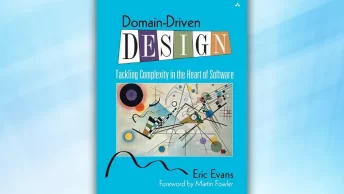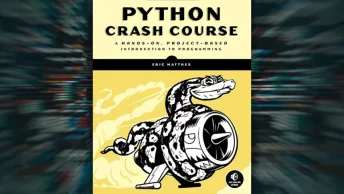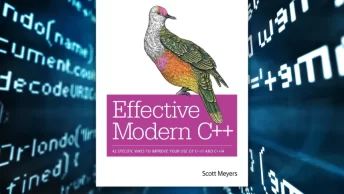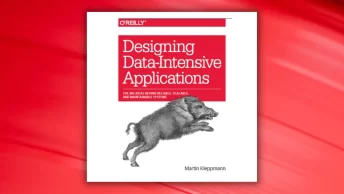Introduction to Machine Learning with Python PDF is a book written by Andreas C. Müller and Sarah Guido, and published by O’Reilly Media in 2016. It is an accessible introduction to the world of machine learning that covers various techniques, including supervised and unsupervised learning, deep learning, and more.
The book explores each concept through real-world examples, while also providing readers with the tools needed to understand and apply machine learning algorithms. It contains a variety of topics, from exploratory data analysis to building powerful models that can make predictions from data. There are also practical tips for improving model performance and avoiding over-fitting.
Introduction to Machine Learning with Python has received positive reviews from readers and critics alike. It has sold over 60,000 copies around the world and is considered the go-to resource for new machine learning practitioners. The book is available in both physical and digital formats, including paperback, hardcover, audiobook, Kindle ebook, ePub ebook, and online streaming video.
Table of Contents
Introduction to Machine Learning with Python Summary
The book starts with a general introduction to machine learning and its main concepts, providing an overview of the most popular algorithms used in various fields. It then moves on to cover fundamental topics such as supervised and unsupervised learning, data preprocessing, feature extraction and selection, model assessment, and optimization.
Finally, it delves into more specialized topics such as clustering using K-Means and Hierarchical Clustering, Support Vector Machines, Decision Trees and Ensembles, Neural Networks, and Natural Language Processing with Deep Learning techniques such as Convolutional and Recurrent Neural Networks.
The authors then provide detailed explanations of how to use Python libraries such as scikit-learn, pandas, NumPy, matplotlib, and TensorFlow to implement machine learning algorithms with real data. Throughout the book, readers will find practical examples and code snippets that enable them to quickly get up and running with ML algorithms.
Details of Introduction to Machine Learning with Python Book
| Book | Introduction to Machine Learning with Python |
| Author | Andreas C. Müller and Sarah Guido |
| Original language | English |
| Originally published | 2016 |
| Category | Computers, Languages |
| Publisher | O'Reilly Media |
| Total Pages | 400 |
| Format | PDF, ePub |
Multiple Languages Editions of Introduction to Machine Learning with Python Book
Introduction to Machine Learning with Python book has been translated into multiple languages. It is now available in Japanese, Chinese, Korean and Portuguese editions.
| Book Editions | Check Now |
|---|---|
| English | Check Price |
About the Author
Andreas C. Müller is a data scientist, teacher, and author based in Berlin, Germany who specializes in Machine Learning algorithms. He holds a Ph.D. in Astrophysics from the University of Bonn, where he focused on large-scale astronomical surveys and machine learning techniques for analyzing astronomical images.

After graduating with his doctorate, Andreas became a research scientist at the Max Planck Institute for Informatics in Saarbrücken, where he worked on various projects related to machine learning and natural language processing. He then went on to lead the Data Science team at Amazon Germany, focusing on building large-scale predictive models for product recommendations.
Sarah Guido is a software engineer, teacher, and author based in Brooklyn, NY who specializes in Python programming. She has a degree from Columbia University in Computer Science and holds a master’s from NYU’s Center for Data Science.
Sarah is the author of multiple books on Python programming and data science topics including A Whirlwind Tour of Python (O’Reilly, 2016) and Introduction to Machine Learning with Python (O’Reilly, 2017). She has also written articles for the O’Reilly blog and teaches Python programming to students at Flatiron School.
Introduction to Machine Learning with Python PDF Free Download
Click on the download button below to get a pdf file of the Introduction to Machine Learning with Python book.
Similar Books to Introduction to Machine Learning with Python Book
- Python Machine Learning: Machine Learning and Deep Learning with Python, scikit-learn, and TensorFlow 2, by Sebastian Raschka
- Practical Machine Learning with Python: A Problem-Solver’s Guide to Building Real-World Intelligent Systems, by Dipanjan Sarkar
- Computer System Architecture by M. Morris Mano
- Hands-On Machine Learning with Scikit-Learn, Keras and TensorFlow: Concepts, Tools, and Techniques to Build Intelligent Systems, by Aurelien Geron
- Machine Learning for OpenCV 4: Intelligent Image Processing with Python, by Michael Beyeler
- Machine Learning with Python: A Practical Introduction, by Sarah E. Ballou
FAQs(Frequently Asked Questions)
How many pages does Introduction to Machine Learning with Python book have?
Introduction to Machine Learning with Python by Andreas C. Müller and Sarah Guido has 512 pages in total.
Who is the target audience of the Introduction to Machine Learning with Python book?
This book is designed for anyone interested in learning about machine learning with Python, no matter their level of expertise.
Is the Introduction to Machine Learning with Python book worth reading?
Yes, the Introduction to Machine Learning with Python book is definitely worth reading for anyone interested in learning about machine learning.
What is the genre of the Introduction to Machine Learning with Python book?
The genre of the Introduction to Machine Learning with Python book is a technical manual.
What topics does Introduction to Machine Learning with Python cover?
This book covers a variety of topics related to machine learning, including supervised and unsupervised learning, algorithms such as support vector machines and decision trees, natural language processing, as well as practical tips and tricks for applying machine learning models in the real world.







